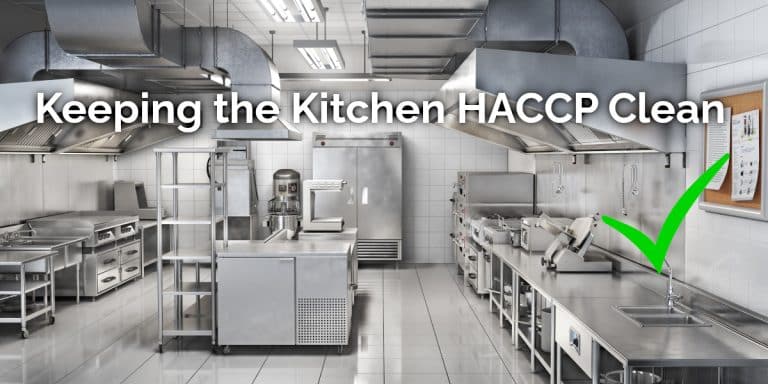In a kitchen, ensuring cleanliness and safety is essential to prevent the occurrence of foodborne threats that can compromise the health of individuals. Proper cleaning and sanitation practices, along with adherence to personal hygiene standards, are key to maintaining a hygienic environment. In this essay, we will discuss effective methods to keep various kitchen components clean and safe from foodborne threats, focusing on specific areas such as the fridge veggie drawer, fridge meat compartment, blender gasket, can opener, rubber spatula, rubber-sealed food containers, fridge water dispenser, and fridge ice dispenser. Additionally, we will explore the importance of personal hygiene and training, cleaning and sanitizing procedures, temperature control, and pest control in maintaining a safe kitchen environment.
1. Personal Hygiene and Training:
Personal hygiene practices play a vital role in preventing food contamination. It is crucial to educate kitchen staff on the following aspects:
- Hand hygiene: Emphasize regular handwashing with warm water and soap, especially before and after handling food, after using the restroom, and after touching potential contaminants.
- Proper attire: Encourage staff to wear clean uniforms and appropriate protective gear, such as gloves, hairnets, and aprons, to minimize the risk of physical and biological contamination.
- Training programs: Conduct regular training sessions to educate staff on food safety practices, including personal hygiene, proper handling techniques, and the importance of cross-contamination prevention.
2. Cleaning and Sanitizing Procedures:
Adhering to effective cleaning and sanitizing practices is essential to eliminate foodborne pathogens and maintain a clean kitchen environment. Focus on the following areas:
a. Fridge veggie drawer and meat compartment:
- Empty the drawers and compartments, removing any spoiled or expired items.
- Wash the drawers and compartments with warm soapy water, using a brush or sponge to remove any debris.
- Rinse thoroughly and sanitize with a food-safe sanitizer.
- Allow the drawers and compartments to air dry before restocking them with fresh produce and meat products.
HACCP training: https://ehaccp.org/haccp-training-for-blender-gasket-maintenance/13/07/2023/07/54/
b. Blender gasket:
- Disassemble the blender, separating the blades and gasket from the container.
- Wash the blades and gasket with warm soapy water, using a brush to remove any residue.
- Rinse thoroughly and sanitize with a food-safe sanitizer.
- Clean the container separately using the same process.
- Allow all parts to air dry before reassembling the blender.
c. Can opener:
- After each use, remove any food debris from the can opener with a brush or toothbrush.
- Wash the can opener with warm soapy water, paying attention to the cutting wheel and gears.
- Rinse thoroughly and sanitize with a food-safe sanitizer.
- Allow the can opener to air dry before storing it.
d. Rubber spatula and rubber-sealed food containers:
- Wash the rubber spatula and containers with warm soapy water, paying attention to the crevices and sealing areas.
- Rinse thoroughly to remove any soap residue.
- Sanitize the rubber spatula and containers with a food-safe sanitizer.
- Allow them to air dry completely before reuse or storage.
e. Fridge water dispenser and ice dispenser:
- Regularly clean the exterior surfaces of the dispensers with mild detergent and warm water.
- Follow the manufacturer’s instructions to clean and sanitize the internal components of the dispensers.
- Flush the water lines to remove any build-up or contaminants.
- Sanitize and replace the ice trays or ice-making components regularly.
3. Temperature Control:
Maintaining appropriate temperatures is crucial to prevent the growth of harmful bacteria. Implement the following practices:
a. Fridge temperature control:
- Ensure that the fridge is set to a temperature below 41°F (5°C) to prevent bacterial growth.
- Regularly monitor and record the fridge temperature to ensure it remains within the safe range.
- Store raw meats on the lower shelves to prevent cross-contamination.
b. Cooking temperatures:
- Ensure that meats, poultry, and seafood are cooked to their recommended internal temperatures to eliminate harmful bacteria.
- Use a food thermometer to verify that the food has reached the appropriate temperature.
- Promptly cool and refrigerate cooked food to prevent bacterial growth.
4. Pest Control:
Effective pest control measures are essential to prevent contamination and maintain a safe kitchen environment:
a. Regular inspections:
- Conduct routine inspections to identify and address any signs of pests, such as droppings, gnaw marks, or sightings.
- Seal cracks, crevices, and openings in walls, floors, and windows to prevent pest entry.
- Keep the kitchen area clean and free of food debris, which can attract pests.
b. Waste management:
- Promptly dispose of waste in tightly sealed containers to deter pests.
- Regularly clean and sanitize trash bins and recycling areas.
c. Professional pest control services:
- Engage licensed pest control professionals to assess and manage pest infestations effectively.
- Follow their recommendations and take preventive measures to minimize the risk of future infestations.
Maintaining a clean and safe kitchen is crucial for preventing foodborne threats and ensuring the well-being of individuals. By adhering to personal hygiene practices, implementing effective cleaning and sanitizing procedures, controlling temperatures, and employing appropriate pest control measures, the risk of contamination can be significantly reduced. Regular staff training and education are also essential to ensure that kitchen personnel are well-informed and equipped to maintain a clean and safe environment. By implementing these strategies, kitchens can effectively mitigate foodborne threats and promote the health and safety of everyone involved.


